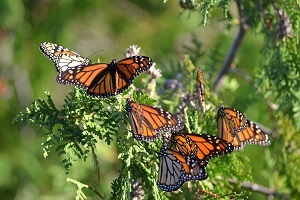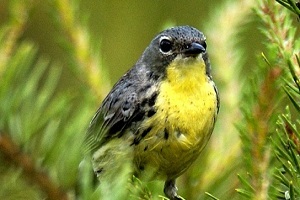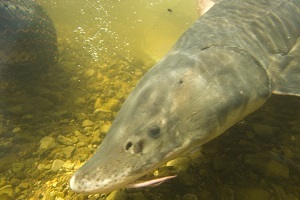|
July 12, 2019
Media contacts: Amy Derosier, 517-614-7050 or Ed Golder, 517-284-5815
Michigan applauds reintroduction, strong support of Recovering America’s Wildlife Act legislation

On-the-ground wildlife and habitat conservation in Michigan and around the country earned critical support this week, with the reintroduction of Recovering America’s Wildlife Act – bipartisan federal legislation that would provide a $1.4 billion solution to the decline of the nation’s fish and wildlife and their natural habitats. U.S. Reps. Debbie Dingell (D-MI) and Jeff Fortenberry (R-NE) today announced the updated RAWA bill in Washington, D.C.
The bulk of the funding – roughly $1.3 billion – would be shared among all U.S. states with an approved, congressionally mandated Wildlife Action Plan that clearly defines their conservation goals and strategies. The remaining $97.5 million of the national total would be designated for Tribal nations’ conservation efforts. Under this legislation, Michigan would receive approximately $27 million annually.
Passage of the Recovering America’s Wildlife Act would help Michigan:
- Keep common fish and wildlife species common.
- Prevent extinction of fish and wildlife species currently listed as threatened or endangered.
- Have cleaner air, water and land, supported by healthier fish and wildlife habitats.
- Connect people with nature.
- Implement a strategic approach for priority conservation actions.
Gov. Gretchen Whitmer praised the legislation as a smart, creative and much-needed step for the nation and for Michigan.
“Michigan is known for its Great Lakes and natural areas, but invasive species, climate change and disease have led to declines in Michigan wildlife and their habitats. One-third of our country’s fish and wildlife species are at risk of becoming threatened or endangered unless we proactively implement on-the-ground conservation measures,” said Whitmer. “This bill, along with proper funding is key to preserving Michigan’s environment. By protecting what makes Michigan unique, we’re investing in our future, creating jobs and continuing to bolster our economy.”
|

Department of Natural Resources Director Dan Eichinger pointed to the recovery of the state's Kirtland’s warbler population as clear evidence that such proactive efforts work. The beloved songbird, which nests in young jack pine forests in northern Michigan, had once fallen to just 167 nesting pairs in the early 1970s. Today, the DNR is proud to say that count sits at more than 2,300 nesting pairs – well above the established recovery population goal.
“The Kirtland’s warbler comeback truly is a Michigan wildlife management success story, aided by efforts from the DNR, the U.S. Fish and Wildlife Service, the U.S. Forest Service, conservation groups and many individual volunteers,” Eichinger said.
“Funding provided under the Recovering America’s Wildlife Act is a once in a generation opportunity for wildlife conservation,” Eichinger said. “That level of support will enable Michigan to help and protect more of the unique fish and wildlife communities that are intertwined with Michigan’s outdoor heritage and natural landscape.”
Amy Trotter is the executive director of Michigan United Conservation Clubs. The organization is the National Wildlife Federation affiliate here in Michigan, as well as a longtime partner on many DNR wildlife conservation and habitat improvement projects.
"Conservation is a team sport. It isn't something only a hunter or angler partakes in – it is an endeavor shared by all residents of a community to better their forests, waters and wildlife," Trotter said. "Instilling an ethic of conservation stewardship and volunteerism in Michigan residents ensures that the next generation will enjoy all the splendor that we have been afforded. This legislation would help Michigan carry that conservation message and education further, to engage even more residents.”
|
A comprehensive strategy

Michigan’s Wildlife Action Plan is a key piece of the puzzle in successfully conserving fish and wildlife and their habitats, and a required component for RAWA funding eligibility.
In developing the plan, conservation partners across the state worked together to identify priorities and goals for a 10-year period (2015-2025). They first selected priority habitats – like water and land habitats on which to focus, and then identified the priority species within those habitats, needed actions, and links to other Michigan wildlife conservation and restoration plans.
The resulting Wildlife Action Plan provides the framework for these resources’ long-term protection and health, which are a big part of Michigan’s history, identity and appeal. The plan would help determine prioritization of RAWA funding.
Learn more about the Recovering America’s Wildlife Act legislation and associated benefits at the National Wildlife Federation website NWF.org.
|
/Note to editors: Accompanying fact sheets and photos are available below for download. The species pictured are examples of the fish and wildlife in Michigan that would gain significant financial support for conservation recovery efforts, upon passage of the federal Recovering America's Wildlife Act./
- Recovering America's Wildlife Act fact sheet
-
Michigan's Wildlife Action Plan fact sheet
-
Monarch butterflies: A scene from the monarch butterfly fall migration at Peninsula Point on the Stonington Peninsula in Delta County, Michigan, September 2018. A U.S. Fish and Wildlife Service decision on listing the monarch as endangered or threatened is expected in December 2020.
-
Kirtland's warbler: The Kirtland's warbler is the rarest migratory songbird in North America. Michigan's numbers, once dwindled to the low hundreds, now sit at more than 2,300 nesting pairs, which is well above the established population recovery goal.
-
Lake sturgeon: The lake sturgeon is Michigan's largest fish species, growing up to well over 6 feet in length and more than 200 pounds. There are only 24 populations throughout the state; 12 of those populations are at risk of being lost for good. Additional work is needed for recovery.
|